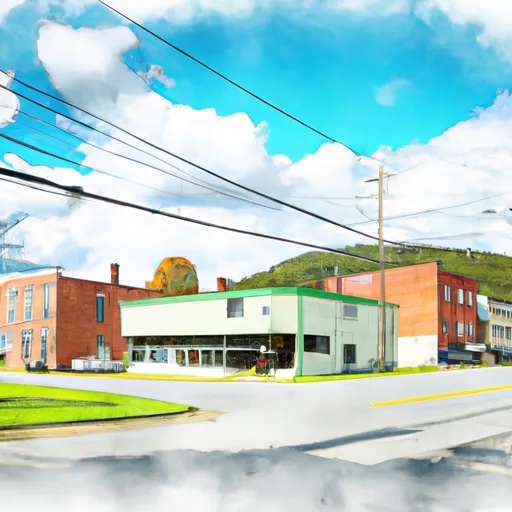-
 Snoflo Premium
Snoflo Premium
Get unlimited access to all our content
With no Ad interruptions! - Start Your Free Trial Login with existing account
Clearville
Eden Index
Climate
8.1
•
Recreation
4.5
•
Community
•
Safeguard
4.8/10

Clearville, Pennsylvania is a small unincorporated community located in the south-central part of the state. The area experiences a humid continental climate with four distinct seasons. Summers are warm and humid while winters are cold with significant snowfall. The region is dotted with several creeks and streams that contribute to the hydrology constituents of the area. The nearby Chesapeake Bay watershed also plays a critical role in the local eco-system. Outdoor enthusiasts can enjoy hiking, camping, and fishing opportunities in the nearby Blue Knob State Park, which is known for its stunning mountain vistas and rugged terrain. Additionally, the historic Bedford County Covered Bridge Driving Tour allows visitors to explore the region's rich cultural heritage.
What is the Eden Index?
The Snoflo Eden Index serves as a comprehensive rating system for regions, evaluating their desirability through a holistic assessment of climate health, outdoor recreation opportunities, and natural disaster risk, acknowledging the profound impact of these factors on livability and well-being.
Climate Health Indicator (CHI): 8.1
Clearville receives approximately
1007mm of rain per year,
with humidity levels near 83%
and air temperatures averaging around
11°C.
Clearville has a plant hardyness factor of
6, meaning
plants and agriculture in this region thrive during a short period during spring and early summer. Most
plants will die off during the colder winter months.
By considering the ideal temperature range, reliable water supplies, clean air, and stable seasonal rain or snowpacks, the Climate Health Indicator (CHI) underscores the significance of a healthy climate as the foundation for quality living.
A healthy climate is paramount for ensuring a high quality of life and livability in a region, fostering both physical well-being and environmental harmony. This can be characterized by ideal temperatures, reliable access to water supplies, clean air, and consistent seasonal rain or snowpacks.
Weather Forecast
Streamflow Conditions
Potomac
Area Rivers
Potomac
Snowpack Depths
Potomac
Reservoir Storage Capacity
Potomac
Groundwater Levels
Recreational Opportunity Index (ROI): 4.5
The Recreational Opportunity Index (ROI) recognizes the value of outdoor recreational options, such as parks, hiking trails, camping sites, and fishing spots, while acknowledging that climate plays a pivotal role in ensuring the comfort and consistency of these experiences.
Access to outdoor recreational opportunities, encompassing activities such as parks, hiking, camping, and fishing, is crucial for overall well-being, and the climate plays a pivotal role in enabling and enhancing these experiences, ensuring that individuals can engage in nature-based activities comfortably and consistently.
Camping Areas
| Campground | Campsites | Reservations | Toilets | Showers | Elevation |
|---|---|---|---|---|---|
| Elizabeth Furnace | 36 | 803 ft | |||
| Shenandoah River - Guest State Park | 42 | 716 ft | |||
| Rocky Gap State Park | 278 | 1,231 ft | |||
| Hawk | 15 | 1,381 ft | |||
| Blue Knob State Park | None | 2,576 ft | |||
| Shawnee State Park | None | 1,254 ft | |||
| Little Fort OHV | 11 | 1,363 ft | |||
| Fifteen Mile Creek - C and O Canal National Park | 10 | 435 ft | |||
| Mathews Arm - Shenandoah National Park | 165 | 3,062 ft | |||
| Green Ridge State Forest Dispersed | 100 | 1,076 ft |
Nearby Ski Areas
Catastrophe Safeguard Index (CSI):
The Catastrophe Safeguard Index (CSI) recognizes that natural disaster risk, encompassing floods, fires, hurricanes, and tornadoes, can drastically affect safety and the overall appeal of an area.
The level of natural disaster risk in a region significantly affects safety and the overall livability, with climate change amplifying these risks by potentially increasing the frequency and intensity of events like floods, fires, hurricanes, and tornadoes, thereby posing substantial challenges to community resilience and well-being.
Community Resilience Indicator (CRI):
The Community Resilience Indicator (CRI) recognizes that education, healthcare, and socioeconomics are crucial to the well-being of a region. The CRI acknowledges the profound impact of these elements on residents' overall quality of life. By evaluating educational resources, healthcare accessibility, and economic inclusivity, the index captures the essential aspects that contribute to a thriving community, fostering resident satisfaction, equity, and social cohesion.

